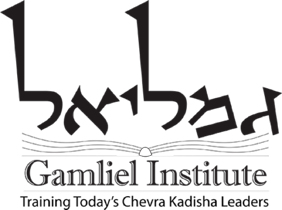Jewish Life Cycle
The Continuum of Life
Judaism is about life: the opportunity to do good, to create, to make the world a better place. Unlike many other religions, the Jewish focus is not on the afterlife; it is on olam hazeh (literally, “this world”), on the here and now. When we concentrate on death, it is because it is a part of life, although a part that is often ignored or denied. Mortality is what we all have in common. How we deal with death—our attitudes, our practices, our institutions — are a reflection of our approach to life.
The Jewish view of life is a continuum, a continuous flow of growth, learning, sharing, teaching, and becoming, alone and with family and community. Because of this view, our rituals include individual aspects and communal aspects, enabling us to grow as individuals and to share and celebrate as a community. This approach supports personal learning and growth, as well as group participation and sharing that is not possible alone. Specifically, Judaism includes rituals for all stages in the life continuum, including death, and each of these is structured to promote personal and communal meaning.
Since our approach to death reflects how we see life, you can guess that the entire continuum of care for those who are ill and dying, through death, burial, and mourning, is structured for the health of the community, as well as to support the healing of those who mourn and the souls of those who depart.
Honoring Life’s Stages through Ritual
Most of us are familiar with Jewish life rituals that honor a particular transition from one stage of life to the next, such as brit milah (circumcision), bar and bat mitzvah, weddings, and so forth. These are community rituals not only for the health of the community, but also so each can become a teaching moment for the family and community involved, and to jointly celebrate the beautiful flow of life through its various stages in each family. Because Judaism views life as a continuum, death is not separate from these stages and these rituals. Death is just another stage of life, with its own rituals, teaching moments, and “celebrations” appropriate for that stage of life.
What do all of these have in common? Respect. Jewish rituals are filled with respect: for the people involved, for the holiness present in life, and for the flow of life itself. When you study Jewish end-of-life practices, respect is the underlying foundation for everything that happens. Through respect, these rituals allow us to face mortality directly, to integrate it into our lives, to effectively handle the necessary steps to honor the deceased, and to move on in a healthy manner as the flow continues.
The most prominent of these rituals focus on what happens (1) after someone has died, but before they are buried, that is, how the deceased is to be treated, and (2) what happens after burial, that is, how we are to mourn. The Jewish Death Practices tab above gives more insight into these practices, while we touch on them a bit more below.
Aging and Death in Life
As Jews, we honor our elders for their life-long wisdom and care for them because they are the pillars of stability in the community. Wisdom is respected in Judaism, as is the fact that every human being is holy, as we were created b’tzelem Elohim, in the image of G-d. We care for elders to preserve the health of the community for the long term. Aging and death are phases in the continuum of the journey of Jewish life that uplift the entire continuum. They not only affect everyone in the community, but they honor each individual as a holy being whose wisdom and contribution are important. For each of these individuals, we have Jewish rituals designed to accent their relationship to life.
One demonstration of this is bikkur cholim, the practice of visiting the sick. Everyone gets ill sometime. It’s expected as part of life. Everyone dies, also, and this, too, is expected as part of life. In every Jewish worship service, we say the Mourners’ Kaddish, a prayer that does not mention death, but is part of the communal ritual by which we support those dealing with a death in their family. This prayer is also a reminder to everyone that life is a gift, one not to be taken for granted. Another example is the ritual of taharah, through which the dead are gently prepared for burial, in a manner that preserves their dignity and modesty, while honoring the holy soul and body of the deceased. The Jewish life continuum is a daily flow that includes aging, dying, mourning, and living — a continuum that honors the holiness inherent in each of these as threads in the tapestry of life.
Owning Mortality as a Community
Death denial is prevalent throughout the modern world, an attitude that includes much of the Jewish population as well. However, Jewish practices and rituals attempt to mitigate this by including death in daily prayers and services, and marking special times in the yearly cycle to remember our dead. By including a Chevrah Kadisha in the community, we acknowledge the presence of death in our lives and prepare accordingly. The Chevrah Kadisha is the team of people whose job it is to prepare bodies for burial (through the taharah ritual), and to accompany the dead between death and burial (the shmirah ritual, by which we make sure the souls of the dead are not alone), among other things. The scope of the Chevrah can be limited to just taharah and shmirah, but could also include preparing meals of consolation, leading or attending shiva services, helping to fill in graves after burial, sewing burial shrouds (tachrichim), making caskets (aronim), and helping to educate the community about Jewish death practices.
In life we give respect to each other on a daily basis, as we consider each person to be a holy being created in the image of G-d. We do this because Judaism teaches that each person has within them a holy soul, a spark of the Divine, that animates and gives life to each of us. Our tradition teaches that when we die, this soul lives on after the body is no longer living. Thus, we continue this tradition by giving the same respect to the dead that we give to the living. We go to great lengths in our death rituals to preserve the modesty and dignity of the dead between death and burial, as well as in post-burial rituals and prayers.
We support the living through extensive guidelines for mourning the dead, which enable us to show respect to ourselves, our families, our community, and to the flow of life. The mourning practice confronts the mourner to face death, move through it in meaningful ways, and to then re-enter life in a gradual and supportive manner. It is respectful and supports of the dignity of both life and death, while enabling us to live meaningfully and richly even in the face of loss.
Thus it is our task to honor each other as holy beings in life and in death, both in how we live and how we honor and care for the dead.

